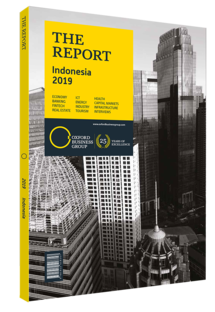Rudiantara, Minister of Communication and Information Technology: Interview

Interview: Rudiantara
What can be done to close existing gaps in infrastructure and digital service penetration?
RUDIANTARA: Nearly half of Indonesia’s mobile subscribers still utilise 2G services. The Indonesia Broadband Plan 2014-19 targets a penetration rate for mobile broadband subscription of 100% among urban and suburban populations and 52% of people in rural areas by 2019. These goals explain the priority of mobile broadband expansion. With 96% of the population already covered for mobile broadband, the government is focused on widening the use of fixed broadband, the penetration rate of which is currently estimated at 9.4%, and on developing the necessary infrastructure.
The availability of high-speed backbones to rural and unprofitable areas is nearly non-existent. Telecoms operators are hesitant to invest in such networks, as it is not technically feasible. This is where the Palapa Ring project, a nearly 3000-km fibre-optic network, plays an important role. The project’s middle section enables 4G access in eastern Indonesia, and it is central to improving connectivity across the archipelago. The western section was completed in early 2018, while the eastern portion is nearing completion. Another strategic project that should ensure nationwide connectivity is a satellite that will be ready to launch in 2022. Together, these projects should address the infrastructural challenges that arise due to Indonesia’s geography.
How should telecoms operators approach adjacent verticals like lifestyle and e-commerce services?
RUDIANTARA: Maximising network utilisation is critical in the telecoms industry. Even in the 2G era, operators introduced value-added services like ringback tones to enhance network utilisation and increase revenues. Nowadays, operators must provide broadband access at competitive prices just to survive. Instead of only watching foreign content passing through their networks, they should reap the emerging benefits of content creation in lifestyle and e-commerce services.
Telecoms operators ought to be key stakeholders in the digital economy, either by providing lifestyle or e-commerce services, or becoming involved in the internet of things. The local digital economy is strong: our country boasts the highest number of unicorn companies in the ASEAN region and offers myriad synergies between telecoms operators and tech start-ups. In the near term we estimate more highly-valued start-ups to follow suit, as the ecosystem gains support in terms of funding, infrastructure and regulatory ease.
How can network sharing among telecoms providers improve the competitiveness of local ICT?
RUDIANTARA: Network sharing can be effective in increasing mobile penetration. However, this is only possible if all operators offer equal coverage – which is not currently the case – since the risks will be distributed evenly among them. Network sharing is also key to accelerating the rollout of fixed and mobile broadband. Eventually, sector competition will be healthy, as the vast consumer base spurs data demand, and all operators will benefit from catering to them accordingly.
What policy measures could serve to deepen the smartphone penetration rate?
RUDIANTARA: It is necessary to have an affirmative policy for the telecoms sector that relaxes and simplifies its regulations and licences. In this respect, the ministry has turned its role, which was initially regulatory, into one that also facilitates and accelerates progress in the sector. On a structural level, this will enable the consolidation of Indonesia’s five telecoms operators in the short to medium term. With regards to distribution, more smartphones must be manufactured in Indonesia that are not only affordable, but are also of a high quality, in order to stretch the smartphone penetration rate beyond the current 42%. This is one reason that we strategically prioritised catalysing the development of networks, devices and applications.
You have reached the limit of premium articles you can view for free.
Choose from the options below to purchase print or digital editions of our Reports. You can also purchase a website subscription giving you unlimited access to all of our Reports online for 12 months.
If you have already purchased this Report or have a website subscription, please login to continue.

